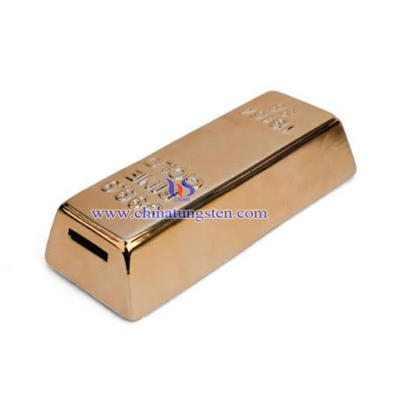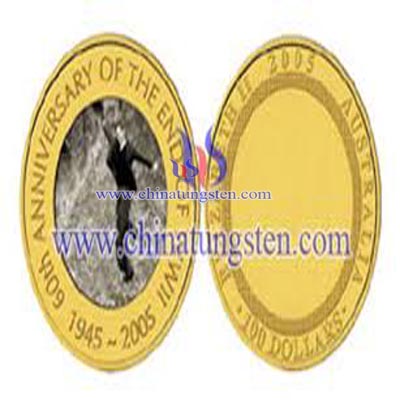The Beginnings of Gold Plating
- Details
- Category: Tungsten Information
- Published on Wednesday, 06 November 2013 11:16
- Written by Cher
- Hits: 741
Many people consider gold plating's origins to have begun with mankind's discovery of gold. Even in the Stone Age, craftsmen pounded gold into thin sheets that were used for decorative purposes. Though thin sheets of gold would later be used in gold plating, these first sheets of gold were not applied to other materials.
Gold plating as it is known today was first developed in 1800. Alessandro Volta discovered electrodeposition, the science known as electroplating. It allowed for two metals to be fused together. Three years later, Luigi Brugnatelli used electroplating to apply gold plating to silver medals.
Gold plated Tungsten Product Manufacturer & Supplier: Chinatungsten Online - http://paper-weight.cn/
Tel.: 86 592 5129696; Fax: 86 592 5129797
Email: sales@chinatungsten.com
Tungsten & Molybdenum Information Bank: http://i.chinatungsten.com
Tungsten News & Tungsten Prices, 3G Version: http://3g.chinatungsten.com
Molybdenum News & Molybdenum Price: http://news.molybdenum.com.cn
The Advantages of Gold Plating
- Details
- Category: Tungsten Information
- Published on Wednesday, 06 November 2013 11:14
- Written by Cher
- Hits: 785
Gold does not oxidize when exposed to air, so its electrical conductivity won't diminish over time. This makes it ideal for electroplating. Gold plating acts as an anticorrosive coating to the material to which it is applied. When bonded with cobalt, the result is a wear-resistant material. These advantages make gold plating ideal for electrical switch contacts and connector pins where electrical contact occurs.

Gold plated Tungsten Product Manufacturer & Supplier: Chinatungsten Online - http://paper-weight.cn/
Tel.: 86 592 5129696; Fax: 86 592 5129797
Email: sales@chinatungsten.com
Tungsten & Molybdenum Information Bank: http://i.chinatungsten.com
Tungsten News & Tungsten Prices, 3G Version: http://3g.chinatungsten.com
Molybdenum News & Molybdenum Price: http://news.molybdenum.com.cn
About the Gold Plating Method
- Details
- Category: Tungsten Information
- Published on Wednesday, 06 November 2013 11:09
- Written by Cher
- Hits: 803
Gold is a popular material for jewelry and other items. The problem is that solid gold is expensive. To get the look of gold without the cost, a technique called gold plating was developed. It is a technique that has been around for centuries and continues because it is effective. The underlying metal is made negatively charged through chemical baths and/or electricity. Once the metal has a charge, it will seek to balance its charge. This is done by applying gold. The two metals share electrons, which creates the bond.

Gold plated Tungsten Product Manufacturer & Supplier: Chinatungsten Online - http://paper-weight.cn/
Tel.: 86 592 5129696; Fax: 86 592 5129797
Email: sales@chinatungsten.com
Tungsten & Molybdenum Information Bank: http://i.chinatungsten.com
Tungsten News & Tungsten Prices, 3G Version: http://3g.chinatungsten.com
Molybdenum News & Molybdenum Price: http://news.molybdenum.com.cn
Utilization and Sustainable Development of Non-Ferrous Metal Deep Processing Industry
- Details
- Category: Tungsten Information
- Published on Wednesday, 06 November 2013 11:10
- Hits: 740
Eleventh Five-Year period, the non-ferrous metal processing industry utilization and sustainable development.
Tungsten Alloy Manufacturer & Supplier: Chinatungsten Online - http://www.tungsten-alloy.com
Tel.: 86 592 5129696; Fax: 86 592 5129797
Email: sales@chinatungsten.com;sales@xiamentungsten.com
Tungsten & Molybdenum Information Bank: http://i.chinatungsten.com
Tungsten News & Tungsten Prices, 3G Version: http://3g.chinatungsten.com
Molybdenum News & Molybdenum Price: http://news.molybdenum.com.cn
Alert Non-Ferrous Metal Plate Valuation Bubble
- Details
- Category: Tungsten Information
- Published on Wednesday, 06 November 2013 11:02
- Hits: 792
Non-ferrous metal stocks have not owned a considerable part of the middle of ore or low percentage of gross profit margin level is not higher than the steel stocks high, but far more than the steel stock valuation levels.This part of the risk of non-ferrous metal stocks should be vigilant.
Tungsten Alloy Manufacturer & Supplier: Chinatungsten Online - http://www.tungsten-alloy.com
Tel.: 86 592 5129696; Fax: 86 592 5129797
Email: sales@chinatungsten.com;sales@xiamentungsten.com
Tungsten & Molybdenum Information Bank: http://i.chinatungsten.com
Tungsten News & Tungsten Prices, 3G Version: http://3g.chinatungsten.com
Molybdenum News & Molybdenum Price: http://news.molybdenum.com.cn





 sales@chinatungsten.com
sales@chinatungsten.com